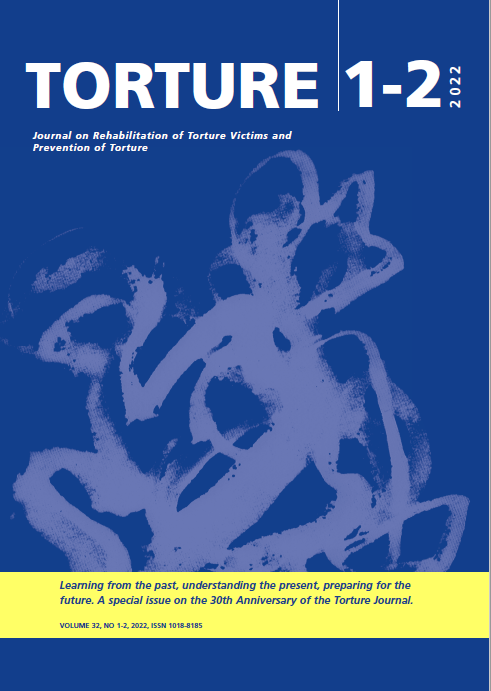Vol. 31 No. 3 (2021): Torture Journal: Journal on Rehabilitation of Torture Victims and Prevention of Torture
In the celebration of the journal’s 30th anniversary and pending the publication of the Special -Commemorative issue, this last number of 2021 has two Special Sections.
On the one hand, the second part of the section on Enforced Disappearance as Torture published in our previous issue is complemented by four additional papers: Natalia Huerta and Edith Escareño examine the case of the 43 students who disappeared in Ayotzinapa (Mexico) in 2014. How the Mexican state’s mistreatment suffered by the survivors and their families has provoked elements of suffering that the authors consider amounting to ill-treatment or torture. Anne Margrethe Sønneland publishes the results of several years of research with witnesses and victims of the trials of perpetrators of enforced disappearance in Argentina, pointing out those elements that could constitute elements of re-traumatisation or additional suffering adding to previous burdens. Mayra Eliana Nuñez analyses the decreasing role of relatives and witnesses in legal proceedings for enforced disappearance before the Inter-American Court of Human Rights. In an overburdened court, neither experts nor victims are allowed to speak. The process before the Court is progressively becoming more of a legal dialogue between the parties, while experts and victims are relegated to add through documentary contributions. In the authors’ opinion, this means that much of the reparatory value of the Court over the suffering of the victims is lost. Finally, Vesna Stefanovska reflects on the El Masri judgement in the European Court of Human Rights and its relevance for victims of enforced disappearance.
The author elaborates on previous literature stating that cases of Extraordinary Rendition constitute forms of enforced disappearance and should be treated as such by international jurisprudence.
On the other hand, this issue includes a Special Section on dental care for torture survivors with two papers that complement each other. According to epidemiological data, about 35% of torture victims have suffered trauma to their mouth or teeth. Anne Catrin Høyvik and colleagues conducted a qualitative study with 10 torture survivors from different cultural backgrounds attending dental facilities. Karlsson and colleagues conducted semi-structured interviews with dentists and professionals from rehabilitation centres in Norway. Together, the two studies provide a unique perspective on the difficulties and risks of re-traumatisation of victims and the low detection capacity and knowledge
of the professionals who should care for them. Important policy recommendations emerge from both studies. Aisling Hearns and collaborators present a validation study of the International Trauma Questionnaire as an instrument for the early detection of Complex Posttraumatic Stress (CPTSD). Their data support the idea that PTSD and CPTSD are distinct entities and that both should be detected in torture survivors attending rehabilitation centres.
Alongside this is the continuing education section, which discusses the forensic documentation of electric shocks as a form of torture. We want to pay an extraordinary tribute to Dr June P. Lopez, a founding member of the IRCT and a key figure in the fight against torture in recent decades, who passed away this month. Along with an obituary by Dr Aurora Parong, friend and fellow, we include the text of an essay that Dr June Lopez was writing for the 30th anniversary of the Journal. Although she considered it an unfinished text, we have decided to publish it as the best tribute to a tireless fighter who leaves behind an indelible mark.


